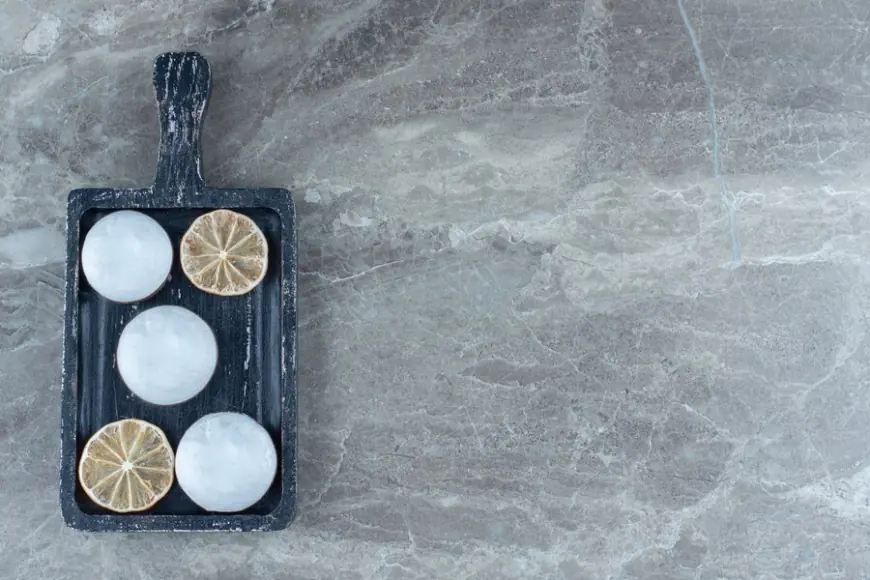How to Choose the Right Marble for Your Kitchen Essentials

Marble has long been a preferred material for interior design, especially in kitchens. Known for its beauty and sophistication, marble brings an element of timeless elegance that can elevate any kitchen. However, when it comes to choosing the right marble for your kitchen essentials, several factors need to be considered to ensure it meets both aesthetic and practical needs. From countertops to backsplashes, the right marble can transform your kitchen into a luxurious space while providing durability and ease of maintenance.
Understanding Marble for Kitchen Essentials
When selecting marble for your kitchen essentials, the material's qualities—such as color, texture, and durability—play an important role. Marble is a natural stone with a unique pattern, which makes each piece distinct. As beautiful as marble can be, it is important to understand its characteristics before making a decision.
Marble kitchen essentials, such as countertops, islands, and cutting boards, need to withstand everyday use, which involves exposure to heat, stains, and heavy traffic. Marble’s porous nature means it can absorb liquids, which could lead to staining if not properly sealed. It’s crucial to choose a marble that not only complements the style of your kitchen but also performs well under these conditions.
Choosing the Right Type of Marble for Kitchen Essentials
1. Consider the Color and Pattern
The color and pattern of the marble are essential factors when selecting marble for your kitchen. Marble comes in a variety of hues, ranging from pure whites to rich, dark tones. If you want to create a light and airy feel in your kitchen, white marble with subtle veining is a great option. This classic look works well with a wide range of kitchen styles, from modern to traditional. For your marble kitchen essentials, white marble with delicate patterns will provide a timeless elegance that complements any décor, making it an ideal choice for countertops, backsplashes, and other key areas.
On the other hand, if you're looking for a bolder, more dramatic look, darker marble such as deep gray or black can make a statement. The natural veining patterns in marble add character, but it's important to choose a pattern that matches the overall aesthetic of your kitchen. Busy patterns may work better in larger kitchens, while simpler patterns can create a more understated elegance in smaller spaces.
2. Durability and Maintenance of Marble Kitchen Essentials
Marble kitchen essentials must endure the wear and tear of everyday kitchen tasks. While marble is beautiful, it is not as durable as granite or quartz. As a natural stone, it is more susceptible to scratches, chips, and stains, especially if exposed to acidic substances such as lemon juice or vinegar.
To ensure your marble surfaces last, choose a high-quality marble that is less porous and more resistant to damage. Opting for a marble with a honed finish, which has a matte surface, can also help hide scratches better than the glossy polished finish. A honed finish is also more resistant to stains as it does not reflect light in the same way as polished marble. Additionally, it's important to seal the marble properly during installation and maintain this seal over time to minimize damage and staining.
3. Maintenance and Cleaning of Marble
One of the key considerations when using marble for your kitchen essentials is how to maintain and clean it. Regular sealing is essential to prevent liquid absorption, which could lead to stains. You should clean marble surfaces with a soft cloth and a pH-balanced cleaner. Avoid using harsh chemicals, as they can damage the stone’s surface over time.
For marble kitchen essentials like countertops and backsplashes, it is also advisable to wipe up spills immediately. Oil, wine, and other acidic liquids can leave permanent marks if allowed to sit on the surface for too long. Marble requires a bit of extra care, but with the right maintenance routine, it can retain its beauty for many years.
Budget Considerations for Marble Kitchen Essentials
1. Quality vs. Price
The cost of marble can vary greatly depending on factors such as origin, quality, and rarity of the stone. Some marbles, like Carrara or Calacatta, are highly sought after and can be expensive, while others, such as Crema Marfil, offer more affordable alternatives. While the price of marble may be higher than other materials like granite or laminate, the beauty and luxury it adds to your kitchen make it a worthwhile investment for many homeowners.
However, it is important to assess your budget when choosing marble for your kitchen essentials. If you're on a tight budget, you may want to consider using marble for specific features, such as a marble island or small countertop areas, and complementing it with more affordable materials for other parts of the kitchen. This way, you can still enjoy the elegance of marble without exceeding your budget.
2. Installation Costs
Installation is another factor that contributes to the overall cost of your marble kitchen essentials. Professional installation is highly recommended, as marble is heavy and requires expertise to cut and fit properly. The cost of installation may vary depending on the complexity of the project, including factors such as the size of the area and the marble pattern's alignment.
It’s a good idea to get a quote from multiple contractors to ensure you’re receiving a fair price. Installing marble yourself is not recommended unless you have experience working with stone, as improper handling could result in damage.
Environmental Considerations
While marble is a natural stone, it is important to consider its environmental impact. Mining marble can be resource-intensive, and the process of extracting and transporting it can contribute to environmental degradation. However, some suppliers offer sustainably sourced marble, so if environmental responsibility is important to you, be sure to inquire about the sourcing practices of the marble you are considering for your kitchen essentials.
1. Choosing Local Marble
If you are concerned about the environmental impact of transporting marble from other regions or countries, you may want to explore locally sourced marble. Local suppliers may offer stones that are not only environmentally friendly but also more affordable due to reduced transportation costs.
2. Recycling and Repurposing Marble
Another environmentally friendly option is recycling and repurposing old marble. If you have access to reclaimed marble, this can be a great way to give new life to the material and reduce waste. Recycled marble may also have a unique, weathered look that adds character to your kitchen essentials.
Conclusion
Choosing the right marble for your kitchen essentials is a decision that involves balancing aesthetics, practicality, and budget. With careful consideration of the type, durability, maintenance needs, and environmental impact, you can select the perfect marble to suit your kitchen. Whether it’s for countertops, backsplashes, or other elements, the right marble can add a touch of luxury and elegance to your kitchen that will last for years.
What's Your Reaction?
 Like
0
Like
0
 Dislike
0
Dislike
0
 Love
0
Love
0
 Funny
0
Funny
0
 Angry
0
Angry
0
 Sad
0
Sad
0
 Wow
0
Wow
0






















































